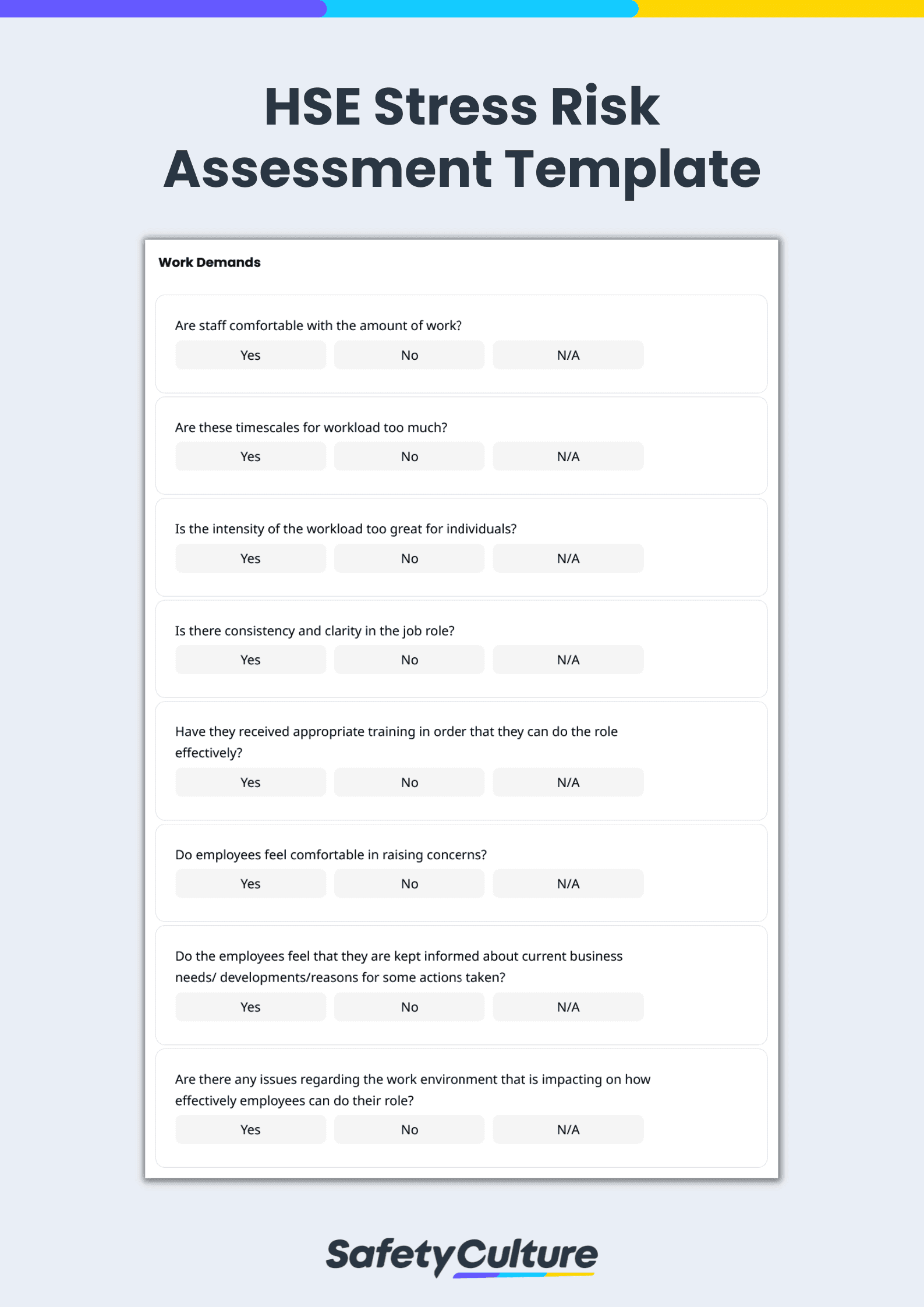What is a Stress Risk Assessment?
A stress risk assessment is a systematic process of identifying and evaluating factors that can cause work-related stress for employees. Carrying out stress risk assessments can help protect worker health and enabling employees to manage work-related stress better can also increase overall business productivity.
What is the Purpose of a Stress Risk Assessment?
According to the U.K. Health and Safety Executive (HSE), work-related stress, depression, or anxiety accounts for 51% of all work-related ill health across Great Britain. Occupations most affected remain in the health and public sectors. The primary contributing factors that are considered stressful include aspects such as workload, lack of managerial support, and organizational change.
The main purpose of a stress risk assessment is to proactively identify factors on a day-to-day basis that constitute a stressful job. Not only does this type of assessment help individuals to cope with various work-related changes, but it also improves organizations’ chances of minimizing employee stress and pressure at work.
Is a Stress Risk Assessment a Legal Requirement?
The HSE estimates that stress, depression, or anxiety accounted for 17.9 million work days lost annually across Great Britain in 2019/20. Employers in the U.K. have a legal duty to carry out stress risk assessments to protect employees from stress before it elevates into more serious issues, including taking proactive measures to ensure they do not suffer stress-related illness due to their work.
How to Effectively Perform a Stress Risk Assessment
The steps in conducting a stress risk assessment are similar to those of a common risk assessment. The difference between the two lies in the stress-inducing factors. Below is a step-by-step guide on how you can perform a stress risk assessment in your workplace:
Step 1: Identify the factors
Identifying workplace stressors can be determined in a number of ways: by doing a walk-around observation in the workplace or by examining records of employee absences or performance reviews, exit interviews, customer feedback, employee questionnaires, focus groups, etc. By doing this, you may discover problems that often get overlooked. For example, excessive absences may reveal an overwhelming workload or toxic relationships between a colleague or a manager.
Step 2: Determine who it affects and how
Once you determine that your staff is suffering from work-related stress the next step is to analyze the workplace stressors identified. Consult employees and gather data through a survey.
Step 3: Assess the risks and take precautions
This step is where you start analyzing and interpreting the identified stress-inducing factors of your assessment and determine the corrective actions to take. Evaluate how serious the stressors are and determine the consequences it brings towards the organization and business. Evaluating the threats and implementing risk control to each can help you prioritize and solve them appropriately from most severe to least severe.
Step 4: Document the assessment
Record your findings and the next steps to take. This will serve not only as proof that the stress risk assessment was carried out but also as a basis for later review.
Step 5: Review and update
The final step is to regularly evaluate the assessment. Evaluate whether initiatives taken have been effective in preventing or reducing stress in the organization, if not then it may need updating.
Using a Stress Risk Assessment Template
A stress risk assessment template is a tool used by employers as a guide in performing stress risk assessments. Use a workplace stress risk assessment questionnaire which consists of questions such as:
- How much work is there?
- Are staff comfortable with the amount of work?
- Is the intensity of the workload too great for individuals?
- Are there set time scales for workload- are these too much/ too little time to achieve?
- Is there consistency and clarity in the job role- do the team members have to provide work to different groups of staff?



